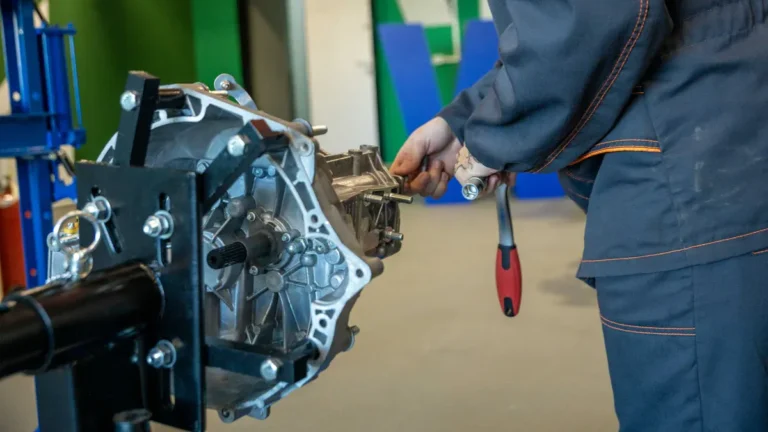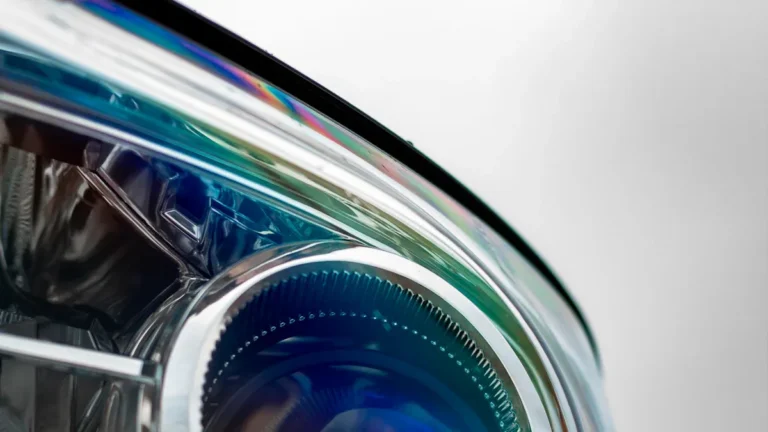The quarter panel is the large exterior section on each side of a car, positioned between the rear door and the trunk or bed. It wraps around the rear wheel well and usually ends at the rear bumper, marked by visible seams or bolts. This panel is more than just a surface; it plays a crucial role in the vehicle’s structure through adding rigidity and protecting internal parts from damage, dirt, and corrosion.
Because it sits above the rear wheels, it often collects grime and is prone to dents and scratches from minor accidents. Its sturdy construction commonly steel, aluminum, or composites means repairs often require skilled welding or bonding, reflecting its importance beyond mere appearance. Knowing exactly where the quarter panel fits into the car’s design helps reveal why it is essential to both function and style, and how it differs from front-end panels like fenders. This connection to the vehicle’s shape, strength, and durability invites further exploration into the panel’s material makeup and the common challenges it faces.
Defining the Quarter Panel: Location and Boundaries
A quarter panel is a large exterior body section found on both sides of a vehicle, positioned between the rear door and the trunk or bed. It encompasses the area above and around the rear wheel well.
It forms a key part of the vehicle’s side structure. Seam identification plays a crucial role in locating and boundary mapping this panel; visible seams or bolts typically mark its edges, clarifying where the quarter panel begins and ends. While the exact boundaries might slightly vary depending on model, they consistently cover this rear side region, providing structural integrity and contributing to the car’s general silhouette.
Identifying these boundaries helps in maintenance and repair through clearly distinguishing this panel from adjacent components like doors or the trunk.
Material Composition and Attachment Methods
Quarter panels are usually made from durable materials such as steel or aluminum alloy sheet metal, though some vehicles use alternatives like fiberglass, carbon fiber, or fiber-reinforced plastic to reduce weight or improve strength.
These panels are primarily attached to the vehicle’s unibody structure through welding, but bonding techniques are also employed in some designs to secure the panel without welding. The method chosen welding or bonding affects repair complexity, with welding often requiring cutting and specialized labor, while bonding can allow for different repair approaches and might influence the panel’s structural integrity.
Common Panel Materials
Many automotive exterior panels are made from sheet metals like steel or aluminum alloys due to their strength and durability. These metals offer excellent structural support and impact resistance, making them ideal for quarter panels. Steel remains popular because it is cost-effective and has high recycling potential, which reduces environmental impact. Aluminum alloys, while lighter, also provide good corrosion resistance and eco-friendliness through recycling.
Alternatives such as fiberglass, carbon fiber, and fiber-reinforced plastics exist primarily for performance or aesthetic reasons, though they tend to be less recyclable and can increase environmental concerns.
Attachment methods vary but commonly include welding or bonding to the unibody structure, requiring technical skill for repair or replacement. These material choices balance vehicle integrity, sustainability, and repair complexity in quarter panel construction.
Attachment Techniques
Attachment techniques are chosen based on the panel material, vehicle design, and the extent of damage. Quarter panels, often made from steel or aluminum alloys, are typically welded to the vehicle’s unibody, providing strong structural integration.
This welding requires precise panel alignment to maintain the vehicle’s integrity and appearance. Whenever replacing or repairing, technicians must carefully follow torque specs for bolts or fasteners used in bonding or securing alternative materials like fiberglass or carbon fiber.
In some cases, bonding adhesives replace welding, especially for composite panels, to avoid heat damage. Proper attachment guarantees the panel’s fitment, preserves structural support, and prevents gaps that could lead to corrosion.
These methods require a balance of skill and adherence to specifications to achieve durable, safe repairs.
Welding vs. Bonding
While considering how quarter panels are attached to a vehicle, welding and bonding emerge as the two primary methods, each suited to different materials and purposes. Welding joins metal panels through melting and fusing them, ensuring strong structural support that meets rigorous safety standards. It is common for steel or aluminum quarter panels but involves a higher environmental footprint due to energy use and emissions. Bonding uses adhesives to glue the panel to the unibody, ideal for composite or aluminum panels, reducing heat distortion and lowering the environmental impact. However, bonding requires precise surface preparation to maintain durability and often complements welding for hybrid attachments.
| Welding | Bonding |
|---|---|
| Strong metal fusion | Adhesive connection |
| Meets high safety standards | Lower environmental footprint |
| Higher energy consumption | Less heat damage to panels |
| Requires skilled labor | Surface prep critical |
Structural and Functional Roles in Vehicle Design
Because the quarter panel forms a large part of the vehicle’s outer shell between the rear door and the trunk, it plays a vital role in the car’s structural integrity and general function.
It helps distribute loads efficiently, enhancing aggregate chassis strength. The quarter panel also provides vibration damping to reduce noise and improve ride comfort. Its presence supports key rear-end components, contributing to both form and function.
Key roles include:
- Load distribution to maintain body rigidity under stress
- Vibration damping that cushions impacts and road irregularities
- Protection of internal mechanical and electrical parts from debris
- Defining the vehicle’s side profile for aerodynamic and aesthetic purposes
- Absorbing minor collision forces, often showing damage initially in fender benders
These combined functions make the quarter panel essential for safety, durability, and vehicle design coherence.
Common Damage Types and Repair Techniques
Damage to quarter panels most often results from minor collisions, such as parking lot bumps or fender benders, as well as from rust and corrosion due to their exposure near the wheels and road debris.
These impacts commonly cause dents, scratches, and sometimes cracks that undermine both appearance and protection.
Dent removal frequently involves hammering or specialized tools to reshape the metal, followed with applying body filler to restore smoothness before repainting.
Corrosion treatment is critical once rust appears, requiring sanding down affected areas and using rust inhibitors to prevent further deterioration.
Repairing quarter panels often balances between restoring the panel and choosing full replacement, which demands cutting, welding, and refinishing, making the whole process labor-intensive but essential for maintaining vehicle structure and aesthetics.
Differences Between Quarter Panels and Fenders
What sets quarter panels apart from fenders starts with their different locations on a vehicle. Quarter panels occupy the rear sides between the rear door and the trunk or bed, while fenders cover the front wheel wells.
This spatial distinction defines their roles and repair intricacies, influenced through varying OEM designs and regional terminology such as “rear wing” for quarter panels in British English.
Key differences include:
- Location: Quarter panels rear side, fenders front side
- Mounting: Quarter panels often welded, fenders usually bolted
- Function: Quarter panels provide chassis support; fenders primarily protect and aid aerodynamics
- Replacement difficulty: Quarter panels more labor-intensive to replace due to welding
- Variations: OEM designs and regional terminology affect shape, size, and naming conventions
Understanding these differences aids in precise identification and repair planning.
Visual and Aesthetic Influence on Vehicle Style
| Design Aspect | Influence on Vehicle Style |
|---|---|
| Brand Identity | Distinctive character and recognition |
| Silhouette Flow | Seamless connection between doors and rear |
| Visual Continuity | Improves side profile unity |
| Character Statement | Adds personality and style expression |
| Buyer Appeal | Influences perception and resale value |



